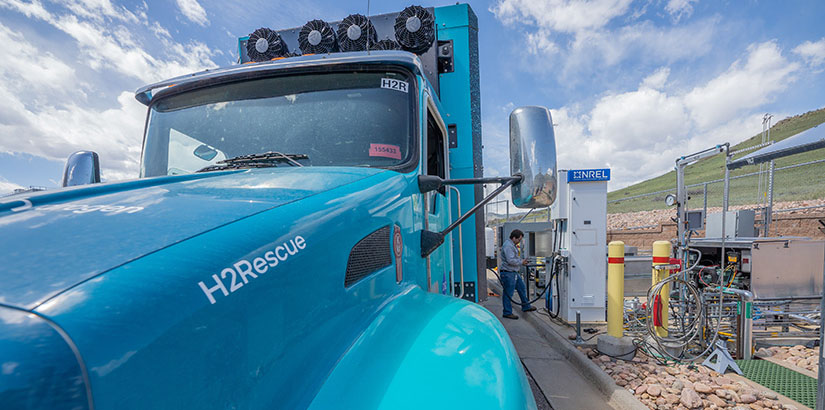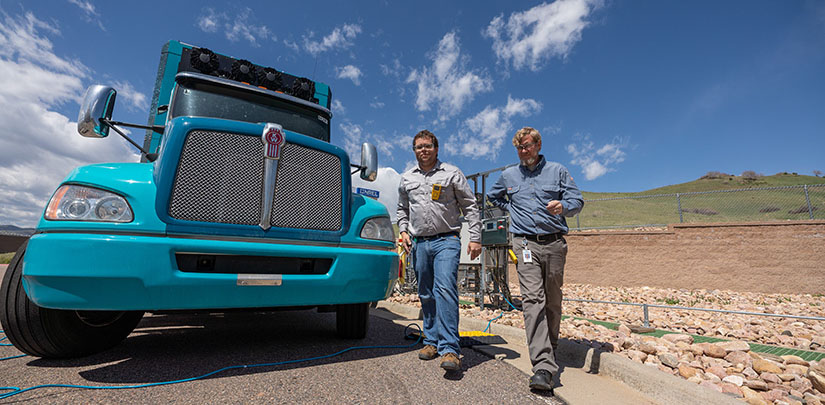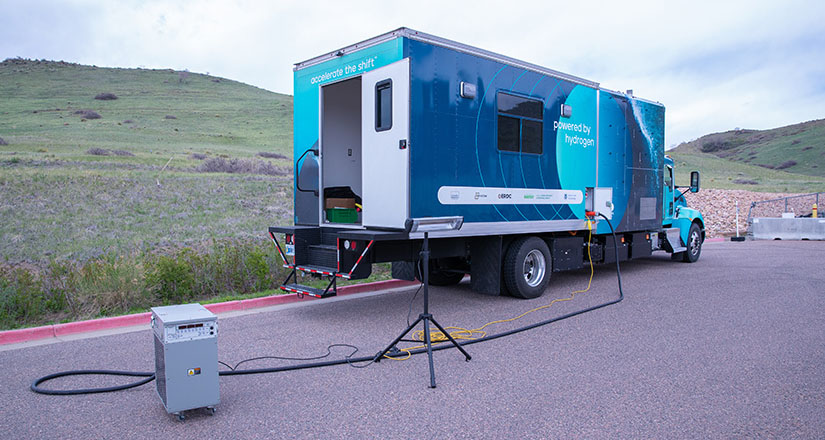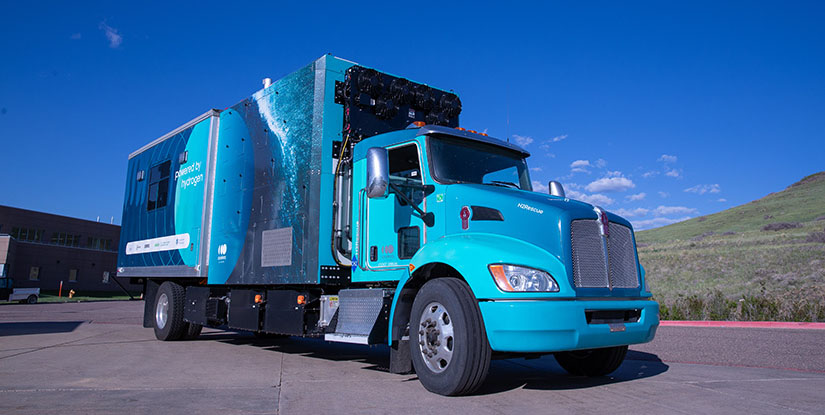Hydrogen to the Rescue: Delivering Power to Disaster Recovery Sites with Zero Emissions

Imagine an emergency vehicle that can provide reliable power to disaster recovery sites, operating in near silence and emitting only water vapor. H2Rescue is precisely that.
In the wake of a disaster, communities are displaced, and critical infrastructure is down. Emergency response efforts help provide necessities such as warm shelter, medical supplies, food, and water by using gasoline and diesel generators. These generators can provide critical power, but they burn fuel quickly, emit carbon dioxide, and produce high noise levels.
Through an interagency operation between the U.S. Department of Energy's (DOE's) Office of Energy Efficiency and Renewable Energy and the U.S. Departments of Defense and Homeland Security, Accelera by Cummins Inc. was awarded $1 million to create a government disaster-relief vehicle that meets emergency field standards and uses an alternative fuel. This vehicle, H2Rescue, is a hydrogen fuel cell-powered truck designed to provide power for disaster relief operations. Unlike conventional fuel-based vehicles, H2Rescue runs with little to no noise and only emits water vapor.
The project teams turned to the National Renewable Energy Laboratory (NREL) to showcase H2Rescue's capabilities. NREL hosted a nearly weeklong demonstration of the vehicle on its South Table Mountain Campus in Golden, Colorado, and was filmed by MotorWeek.
"NREL has the unique capability to supply hydrogen fuel and a high-altitude demonstration site," said Matt Post, demonstration coordinator and hydrogen systems researcher at NREL. "We're happy to be able to support this innovative project."
H2Rescue can drive up to 180 miles and provide power for 72 hours at a disaster site without refueling. H2Rescue accomplishes this by carrying a substantial amount of hydrogen—up to 176 kilograms at 700 bar. As a Class 7 heavy-duty truck that weighs approximately 33,000 pounds, H2Rescue can transport enough hydrogen to both travel and operate as a self-propelled electric generator with ease.

Power is generated onboard using a state-of-the-art delivery system that integrates an electric drivetrain, a hydrogen fuel cell, and a hydrogen storage system with high-energy-density lithium-ion battery packs. The result is a capability to power essential appliances in about 20 homes for 72 hours. The climate-controlled truck bed also enables H2Rescue to serve as a mobile command center that provides communication and coordination.
In addition, because hydrogen fuel cells only emit water, the vehicle can drive and generate power with zero emissions and without much noise. The water produced by the hydrogen fuel cell in the vehicle can furthermore potentially be treated and harnessed as an emergency supply.
Demonstrating H2Rescue's Capabilities
During the demonstration at NREL, the vehicle fueled up at NREL's hydrogen fueling station, drove to the Flatirons Campus near Boulder, Colorado, and stopped by the Federal Center in Lakewood, Colorado, before parking at NREL's Education Center for a nearly weeklong demonstration of the power generation capabilities.
In total, the vehicle drove 180 miles to exhibit its ability to support neighboring communities in the event of an emergency.
"While parked, it was able to supply power quietly and without the exhaust fumes of conventional generators," Post elaborated. "With this successful demonstration, I expect to see more innovative applications that leverage hydrogen."

Future Applications
To accelerate the integration of hydrogen in the clean energy economy, the White House released the U.S. National Clean Hydrogen Strategy and Roadmap, a comprehensive framework for accelerating the production, processing, delivery, storage, and use of clean hydrogen.
Leveraging clean energy will be key to curbing climate change while also providing reliable support to critical sectors. H2Rescue marks a significant advancement in alternative fuel research and sets the groundwork for the commercialization of other hydrogen-powered vehicles that can replace diesel-powered counterparts.

This project was initiated by DOE's Hydrogen and Fuel Cell Technologies Office, supporting the H2@Scale initiative that enables affordable and reliable hydrogen generation, transport, storage, and utilization in the United States across multiple sectors. H2Rescue informs DOE's H2@Scale research and development in heavy- and medium-duty transportation applications that will accelerate the adoption of hydrogen power in markets that are difficult to decarbonize.
Learn more about NREL's hydrogen and fuel cell research and development.
Last Updated May 28, 2025
